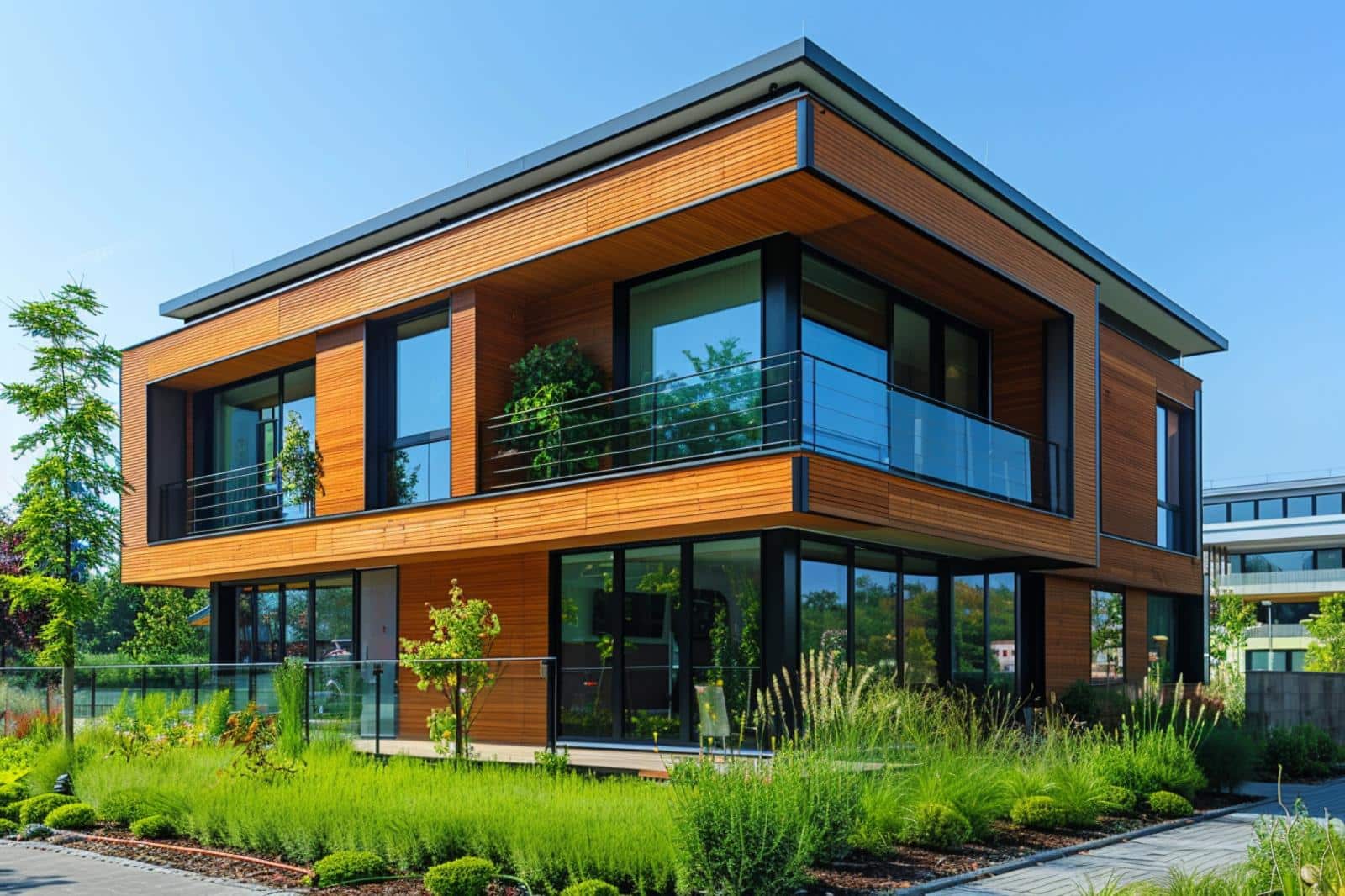How to leverage passive architectural design to reduce energy consumption in new real estate developments?

In the face of growing environmental concerns, the real estate industry has started to pivot towards more sustainable methods of construction. This move is spearheaded by the principles of passive architectural design. Passive design reflects an innovative and advanced approach to building construction, which focuses on harnessing natural energy sources and optimizing building systems to create energy-efficient and sustainable buildings.
Utilizing passive architectural design doesn’t just contribute to protecting the environment, it also offers significant cost savings by reducing energy consumption. Let us delve deep into how this is achieved.
A voir aussi : How can real estate developments be designed to facilitate and encourage non-motorized transportation?
Harnessing Natural Energy Sources
The first step in leveraging passive architectural design is to harness natural energy sources. This is done by actively incorporating design features that exploit the sun, wind, and other natural energy sources.
Solar power is one of the most significant natural energy sources that passive design capitalizes on. Buildings designed with passive solar strategies take into consideration the sun’s position throughout the year to optimize solar heat gain. This involves the strategic placement of windows, walls, and floors to collect, store, and distribute solar energy in the form of heat in the winter and reject solar heat in the summer. This reduces the reliance on artificial heating and cooling systems, leading to significant energy savings.
Cela peut vous intéresser : What innovative waste management strategies can be employed in high-density real estate projects?
Moreover, elements such as thermally resistant materials and insulating glazing can be used to prevent heat loss during winters and heat gain during summers. By incorporating such features in the construction phase, architects can effectively harness natural energy sources, reducing the need for artificial heating and cooling.
Optimizing Building Systems
Another significant way of adding a passive design element to your new real estate development is by optimizing building systems. This involves the efficient use of lighting, ventilation, and HVAC (Heating, Ventilation, and Air Conditioning) systems.
A significant aspect of this is natural ventilation, which refers to the process of supplying and removing air through an indoor space without using any mechanical systems. Architects can design buildings to draw cool air into the building naturally, reducing reliance on air conditioning systems and thereby lowering energy consumption.
Efficient lighting systems are also a part of optimizing building systems. This involves maximizing the use of natural light through clever design, thereby reducing the need for artificial lighting. Skylights, light shelves, and light tubes are some of the design elements that can be incorporated to optimize natural light.
Incorporating Sustainable Materials
The use of sustainable materials in construction is also an integral part of passive architectural design. Sustainable materials are those that provide environmental, economic, and social benefits while protecting public health and environment.
Materials such as bamboo, recycled steel, and cork are not only sustainable but also possess excellent insulation properties. This insulating capacity reduces the energy needed to maintain a comfortable environment in the building, indirectly reducing energy consumption.
Moreover, the use of green concrete, made from recycled materials, not only reduces the carbon footprint of the building but also enhances its energy efficiency. This is because green concrete has superior thermal mass, which helps regulate indoor temperatures.
Reducing Water Consumption
Finally, another crucial part of passive architectural design is the reduction of water consumption. This involves efficient water management systems and the use of water-efficient fixtures.
Integrating a rainwater harvesting system, for instance, can provide an excellent source of water for landscaping, flushing toilets, or even laundry. This significantly reduces the demand for the municipal water supply.
Also, incorporating water-efficient fixtures such as low-flow taps and dual-flush toilets can significantly reduce water usage, therefore conserving valuable resources.
In Conclusion
Passive architectural design can pave the way for a more sustainable future in the real estate industry. From harnessing natural energy sources to reducing water consumption, adopting these strategies can significantly cut down a building’s energy consumption, making it an economically viable choice too. With ever-evolving technology and increasing awareness about sustainability, the future of passive architectural design looks promising. It’s time we embraced this revolution in the realm of building construction.
Emphasizing Indoor Air Quality
A crucial, yet often overlooked aspect of passive architectural design is the role it plays in enhancing indoor air quality. A healthy indoor environment is not just about maintaining comfortable temperatures, but it also involves ensuring good air quality.
Buildings employing passive design principles often feature natural ventilation systems that work to maintain indoor air quality by reducing levels of carbon dioxide, humidity, and other airborne pollutants. These systems use openings in the building, like windows and vents, to draw in fresh air and expel stale air. This constant air movement not only brings in fresh, clean air but also helps to regulate indoor temperatures, thus reducing energy consumption.
In addition, the use of sustainable materials also has a positive impact on indoor air quality. Many traditional construction materials release pollutants into the air over time, known as off-gassing. In contrast, sustainable materials such as bamboo, cork, and recycled steel do not off-gas, thereby contributing to healthier indoor air.
Moreover, passive houses are specifically designed to maintain excellent indoor air quality. They feature advanced ventilation systems that continuously supply fresh air, making them a great healthy and energy-efficient choice for affordable housing.
The Role of Passive Design in Affordable Housing
One of the key takeaways from the principles of passive design is its potential role in affordable housing. The overarching goal of passive design is to reduce energy consumption, and by extension, lower utility bills. This makes it an attractive option for affordable housing projects, which often struggle with limited budgets.
The strategic building orientation, the use of renewable energy sources like solar panels, and the incorporation of natural ventilation systems all contribute to reducing running costs. This, in turn, makes housing more affordable in the long run.
Additionally, the use of sustainable materials in construction not only reduces the environmental impact but can also result in cost savings. Materials like recycled steel, bamboo, and cork are not only more eco-friendly but often cheaper than their conventional counterparts.
In essence, the application of passive design principles can make a significant contribution to affordable housing, providing energy-efficient and cost-effective housing solutions.
Conclusion: The Future of Passive Architectural Design
Passive architectural design, with its emphasis on energy efficiency and sustainability, represents a bold and promising future for new real estate developments. By harnessing renewable energy sources, optimizing building systems, incorporating sustainable materials, and reducing water consumption, passive design significantly cuts energy usage, creating greener and more affordable buildings.
One of the most significant aspects of this design philosophy is the construction of passive houses, which are at the forefront of energy-efficient building design. These houses not only consume less energy but also offer high-quality indoor air and overall superior living conditions.
Additionally, the role of passive design in affordable housing cannot be overstated. By reducing running costs and making efficient use of resources, passive design can make housing more accessible and affordable.
In conclusion, the principles of passive design offer a compelling blueprint for future real estate developments. The challenge now lies in broader adoption and implementation. It is clear that the future of the real estate industry lies in the hands of those who embrace these principles, leading the way towards a more sustainable and energy-efficient future.
